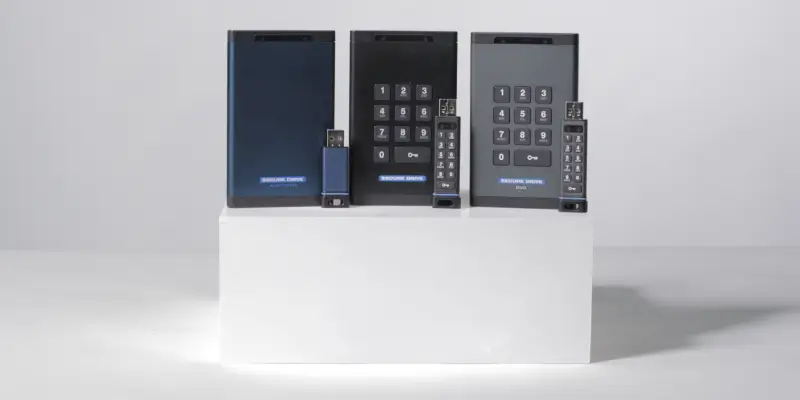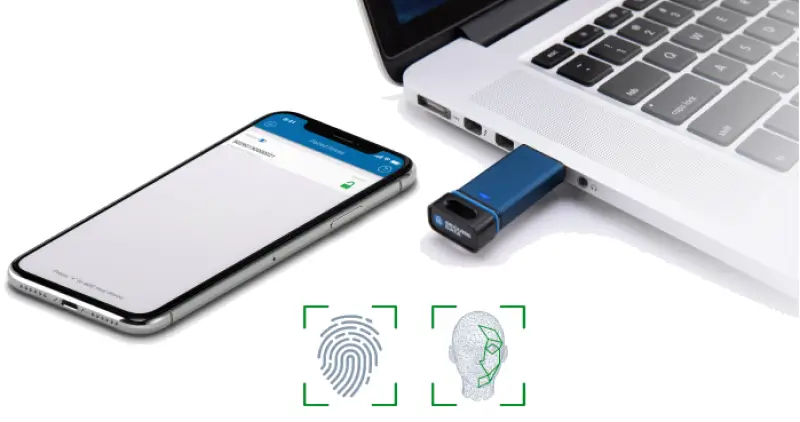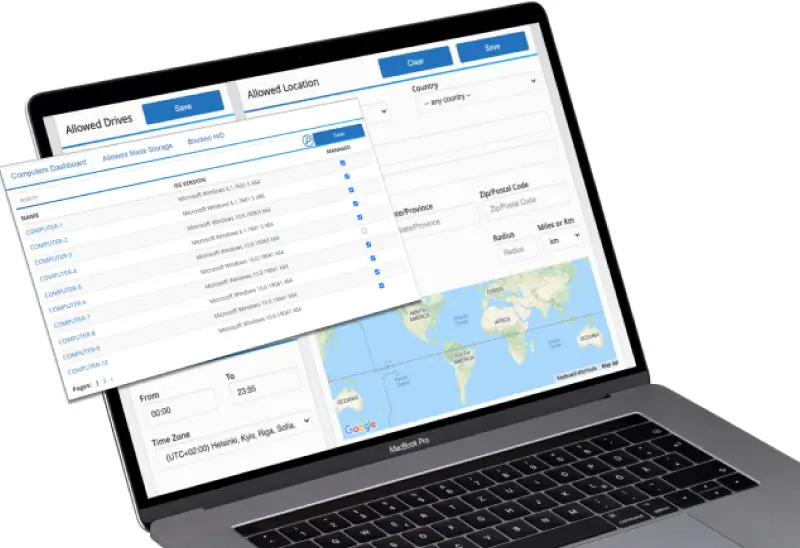Data breaches are increasingly common, with recent studies showing that in 2024, over 16.8 billion records were exposed due to data breaches. This equates to about 533 records compromised every second throughout the year. The alarming statistic underscores the critical need for powerful data encryption and efficient management practices. Encrypted drives are storage devices with advanced encryption algorithms, which are vital in protecting sensitive information from unauthorized access. Remote management technology enables users to securely administer these encrypted drives from any location, offering unprecedented levels of convenience.
The experts at SecureData explain how remote management provides convenience without compromising the security of encrypted drives.
What Is Remote Management
Remote management refers to the capability of accessing and controlling encrypted drives securely from any geographic location through a network connection. At its core, remote management technology involves specialized software tools that authenticate authorized administrators or users, allowing them to configure, monitor, and troubleshoot encrypted external drives and USB flash drives without physical access. Authentication typically involves powerful identity verification methods such as multi-factor authentication (MFA) and secure communication protocols to ensure data privacy and integrity.
Encryption standards, such as AES-256 (Advanced Encryption Standard with a 256-bit key length), provide a strong foundational security layer, ensuring that sensitive data remains inaccessible to unauthorized individuals. When managing encrypted drives remotely, encryption safeguards data transmitted across potentially insecure networks, significantly reducing the risk of interception or unauthorized access.
Convenience of Remote Management for Encrypted Drives
Integrating remote management technology into encrypted drive solutions significantly enhances operational convenience for individuals and organizations. One primary benefit is the ability to manage multiple encrypted drives simultaneously from a centralized interface, streamlining administrative tasks and reducing the complexity traditionally associated with data security.
For example, businesses can remotely update firmware, adjust encryption settings, perform diagnostics, or even initiate secure data erasure without physical intervention. This capability reduces downtime considerably, as issues can be addressed rapidly, avoiding delays caused by manual, on-site procedures.
Furthermore, remote management of encrypted drives provides essential flexibility, especially for geographically dispersed teams or remote workforces. Administrators gain secure, anytime-access to critical systems, regardless of their physical location, enhancing productivity and efficiency across organizational workflows.
Remote Management for Individual Users
While remote management technology is commonly associated with enterprise environments, individual users also benefit considerably from its capabilities. Freelancers, remote professionals, and individuals who manage sensitive personal information can use remotely managed encrypted drives to maintain high data security standards without sacrificing convenience.
For instance, individuals traveling frequently or working remotely from various locations can securely access and manage their encrypted drives from anywhere without the risk associated with physically carrying sensitive data. Remote wipe capabilities further protect individuals by enabling swift data deletion if a device is lost or stolen.
Balancing Convenience and Security
While remote management of encrypted drives offers significant convenience, it inherently introduces potential security vulnerabilities. To address these risks, modern remote management systems employ advanced security measures explicitly designed to mitigate vulnerabilities:
Multi-Factor Authentication (MFA)
- Requires multiple forms of verification before granting access.
- Ensures only authorized individuals can manage encrypted drives.
- Dramatically reduces risks from credential theft or unauthorized access attempts.
Zero-Trust Architecture
- Enforces strict verification for every access request, regardless of network origin.
- Eliminates implicit trust, providing protection even from internal threats.
- Enhances security posture through continuous validation of users and devices.
Secure Communication Channels
- Utilizes end-to-end encrypted VPNs and SSL/TLS protocols.
- Ensures confidentiality and integrity of data transmitted during remote management operations.
- Protects against interception, man-in-the-middle attacks, and tampering.
Granular Access Controls
- Enables precise user-permission settings based on roles and responsibilities.
- Limits exposure to sensitive drive functions or data only to essential personnel.
- Reduces potential insider threats and accidental data breaches.
Geo-Fencing and Time-Fencing Capabilities
- Restricts encrypted drive access to specific geographic regions or timeframes.
- Prevents unauthorized use from unfamiliar locations or at unauthorized times.
- Adds another layer of security, enhancing control over when and where drives are accessed.
Comprehensive Audit Logs
- Records detailed activity logs of all remote management operations.
- Facilitates transparency and compliance with industry regulations.
- Enables quick identification and investigation of security incidents or unusual activities.
Technical Insights and Best Practices
Here are some of the features and best practices for Remote Management:
1. Centralized Key Management
- Secure key generation and distribution
- Protected key storage
- Regular key rotation
- Secure disposal after use
2. Remote Wipe Capabilities
- Enable secure, immediate data erasure for drives that become lost, stolen, or compromised.
- Prevent unauthorized access and minimize data leakage risks.
3. Detailed Audit Trails
- Maintain comprehensive logs recording all remote management activities.
- Provide transparency, support forensic analysis, and ensure regulatory compliance.
4. Secure Remote Firmware Updates
- Regularly implement secure firmware updates remotely to patch vulnerabilities.
- Ensure encrypted drives remain resilient against new threats and exploits.
5. Routine Security Assessments
- Conduct periodic assessments of remote management systems and configurations.
- Access permissions and roles
- Authentication and authorization policies
- Security logs and incident reports
6. Continuous Administrator Training
- Provide ongoing training for administrators on emerging threats, tools, and security best practices.
- Foster a proactive, informed security culture to strengthen organizational defense.
SecureData’s Commitment to Convenience and Security
Remote management of encrypted drives effectively bridges the gap between operational convenience and stringent data security. By adopting advanced technical practices and emphasizing robust encryption protocols, businesses and individual users can confidently protect their most sensitive information without compromising ease-of-use or productivity.
SecureData provides industry-leading remote management solutions for encrypted drives, expertly balancing convenience with unmatched security standards. Contact us to speak with a specialist and discuss your needs.














